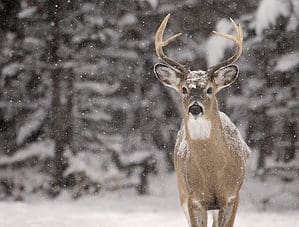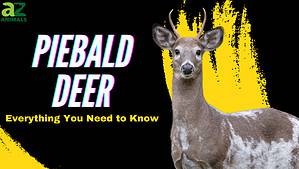If you’ve ever wondered why some deer are black, you must know this isn’t a simple coat pattern! It’s a condition called melanism, and we’re here to tell you everything about it! Keep reading to learn what melanism is, what causes melanism, and how rare melanistic deer are! Moreover, you’ll find out what makes melanistic deer different from albino and piebald deer!
What Is Melanism?
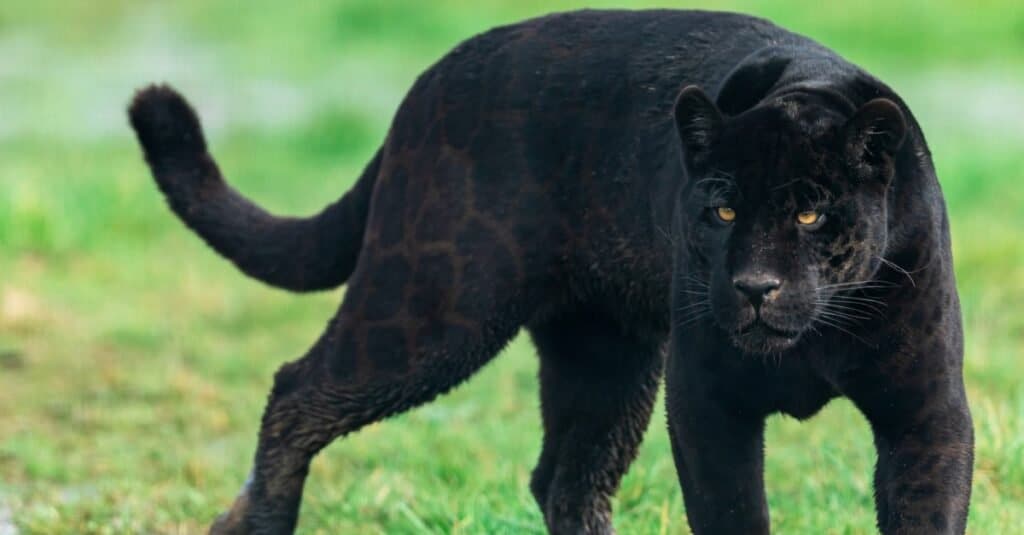
Melanistic animals have dark skin or hair color, while some are completely black.
©AB Photographie/Shutterstock.com
If albino animals completely lack the dark-colored pigment melanin in their skin or hair, melanistic animals have increased development of the melanin pigment. In short, melanistic animals have dark skin or hair color, while some are completely black.
Unlike other uniquely patterned animals (albinos, piebalds), melanistic creatures tend to live longer, thanks to their dark color. They can easily camouflage to avoid predators. Other animals, like leopards, use their appearance for better foraging during night hunting.
Melanism is very common in 11 felid species. Did you know that the black panther is, in fact, a melanistic leopard? The jaguarundi population has many melanistic individuals, too, but they aren’t completely black; they are either dark brown and gray or light reddish.
Even chickens can be melanistic! We’re talking about the Silkie and Ayam Cemani chicken breeds! Moreover, a black flamingo was discovered in 2015 on the Mediterranean island of Cyprus!
Other animals that can be born melanistic include owls, antelopes, zebras, seals, squirrels, penguins, wolves, and turtles.
What Causes Melanism?
Hein van Grouw, in the study called “The dark side of birds: melanism – fact and fiction,” stated that melanism is associated with the mutation of a gene that encodes the MC1R protein, the melanocortin one receptor, which is responsible for melanin pigmentation regulation. However, other studies show that other factors besides genetic mutation may cause melanism.
Melanism is also related to the process of adaptation. This type of melanism is called adaptive, and it’s heritable, with a dominant allele responsible for the amount of melanin.
There’s also industrial melanism – a phenomenon that “forces” animals, insects, and birds to change their color as a consequence of pollution.
What Do Melanistic Deer Look Like?
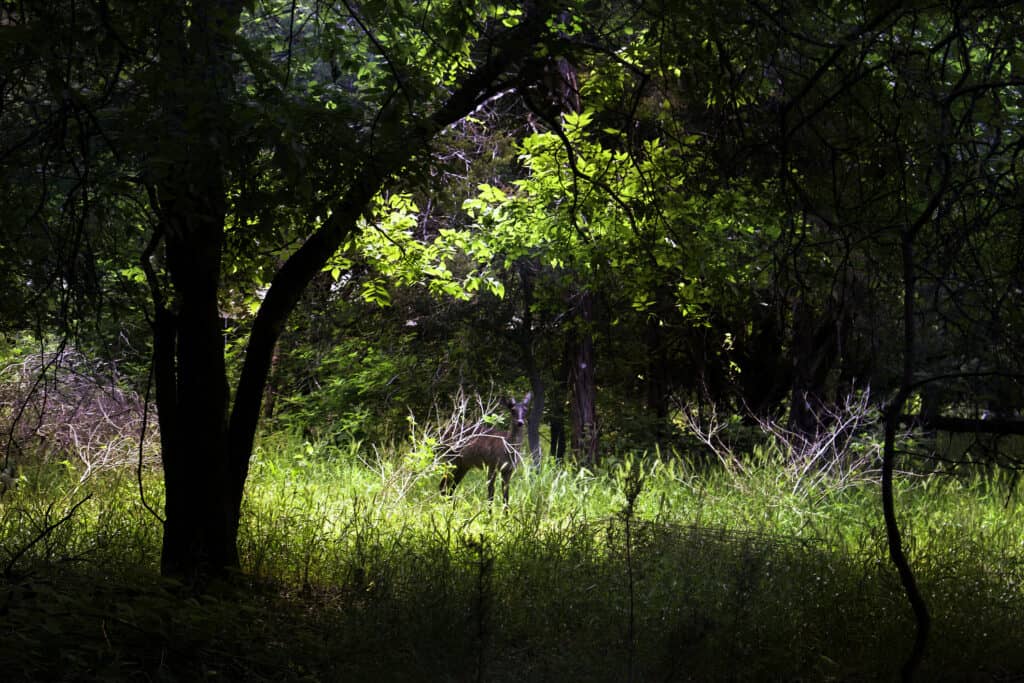
Melanistic deer have very dark brown or completely black hair.
©iStock.com/Benny Winslow
Melanistic deer have very dark brown or completely black hair. They do not have light brown or white coloration. The color is uniformly distributed over their bodies. While albino deer have pink eyes, melanistic deer have normal-colored eyes.
Moreover, unlike albinism and piebaldism, which come with other visible health issues, such as shorter legs, melanism doesn’t affect the deer’s body much. If anything, it protects it from predation and UV radiation. It is also believed that melanism assures the carrier’s body with a stronger immunity against certain diseases and more efficient sunlight heat absorption. Some even state that black cats have a more balanced nervous system than other cats. Is it the same for melanistic deer? We’ve yet to discover this!
Melanistic white-tailed deer have a dark face and dark ears, a mid-dorsal stripe running from the head to the tail apex, and a black-and-white tail – black on the dorsal part and white on the ventral part, as this study shows.
How Rare Are Melanistic Deer?
While melanism is pretty common in other animals, melanistic deer are extremely rare. Even albino deer are more common than melanistic deer! Some sources say that a hunter’s chances to spot a melanistic deer are at a 1:500,000 ratio or lower!
Here’s what we currently know about the melanistic deer population:
- Melanistic white-tailed deer have been spotted in Michigan, Mississippi, Pennsylvania, Virginia, Texas, and South Carolina.
- A study shows that the fallow deer population registered more melanistic deer than other species.
In short, if you happen to see a melanistic deer somewhere in the wild, you should consider yourself extremely lucky!
What Is the Rarest Color of Deer?
Piebaldism, albinism, and melanism are all extremely rare conditions in deer. However, if we were to compare the three, piebaldism is the most common, albinism comes second, and melanism is third.
Should You Shoot a Melanistic Deer?
As long as there aren’t specific restrictions where you usually hunt, shooting a melanistic deer is completely a personal decision. Some hunters decide not to kill these deer if they see them, hoping they’ll continue to breed. However, there’s still no 100% accurate information on whether melanistic deer offspring will also be melanistic.
Melanistic Deer vs. Albino Deer
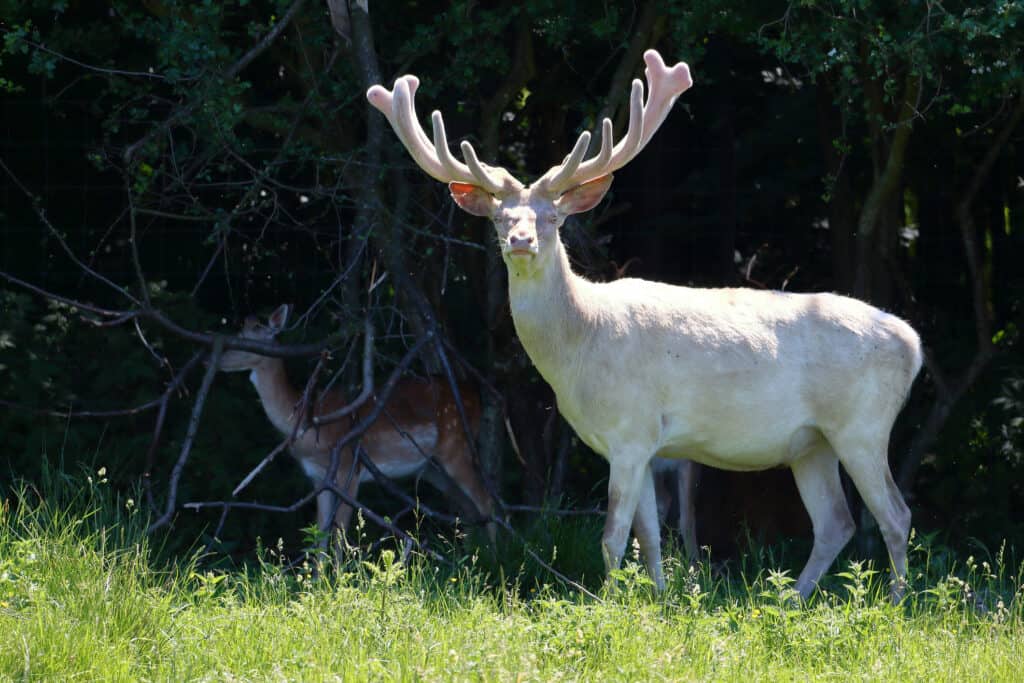
Albino deer have pink eyes, noses, and pinkish hooves.
©iStock.com/giannimarchetti
Melanistic and albino deer are as different from each other as yin and yang! Literally, one is black, and the other is white. Moreover, albino deer have pink eyes, noses, and pinkish hooves, while melanistic deer have a usual eye color. Still, since both deer are extremely rare, it’s unlikely you’ll ever get the chance to see the two in the same place.
Melanistic Deer vs. Piebald Deer
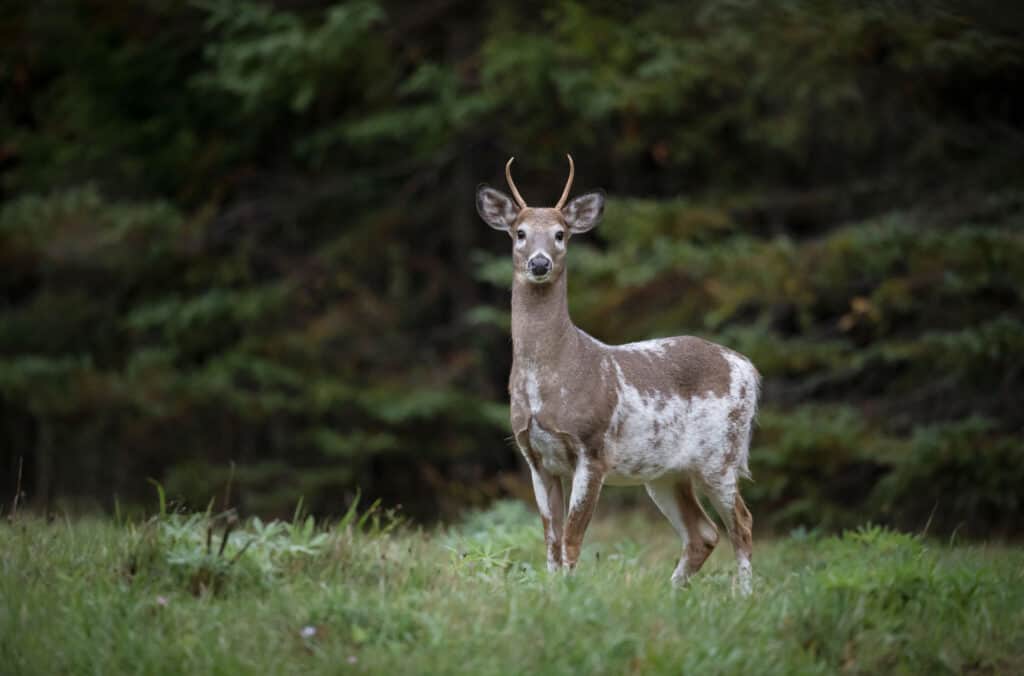
Piebald deer have white spots on a pigmented background.
©iStock.com/Brittany Crossman
Piebald deer have a condition called piebaldism which causes white color patches on their bodies. Some piebald deer can be predominantly brown, while others may be almost completely white with only a few brown spots. It shouldn’t be too difficult to distinguish between the two because melanistic deer do not have any white spots.
Incredible Deer Facts
Here are some incredible deer facts to share with other deer enthusiasts!
- The largest deer species, the Irish elk, went extinct roughly 8,000 years ago! It was about 7 feet tall at the shoulder, while its long antlers measured 12 feet from tip to tip!
- Deer can swim! They can reach around 15 miles per hour, and their hooves help them acquire this speed!
- The Visayan spotted deer is one of the rarest deer species, with only about 300 individuals left.
- Deer hunting has been popular since the Middle Ages.
- Deer have supposedly been on our planet for 40 million years, since the Early Oligocene!
Up Next:
- Musk Deer vs Water Deer: How Are They Different?
- Mule Deer vs Black-tailed Deer: What Are the Differences?
- White-Tailed Deer vs Black-Tailed Deer: What Are the Differences?
The photo featured at the top of this post is © iStock.com/Benny Winslow
Sources
- Cool Green Science, Available here: https://blog.nature.org/science/2020/09/29/black-deer-have-you-seen-this-rare-color-of-a-common-animal/
- Omega Outdoors, Available here: https://omegaoutdoors.blog/blackwhitetail/
- World Deer, Available here: https://worlddeer.org/melanistic-deer/
- JSTOR, Available here: https://www.jstor.org/stable/30055424
Thank you for reading! Have some feedback for us? Contact the AZ Animals editorial team.



